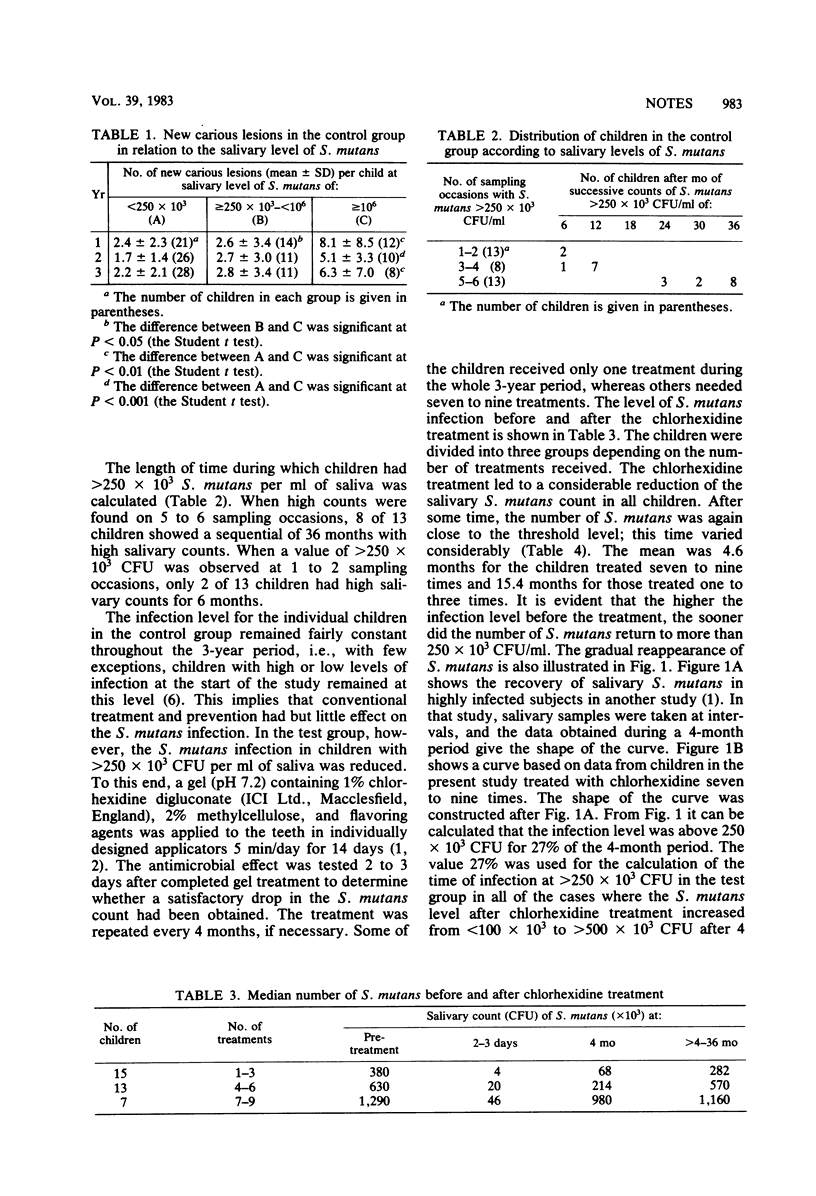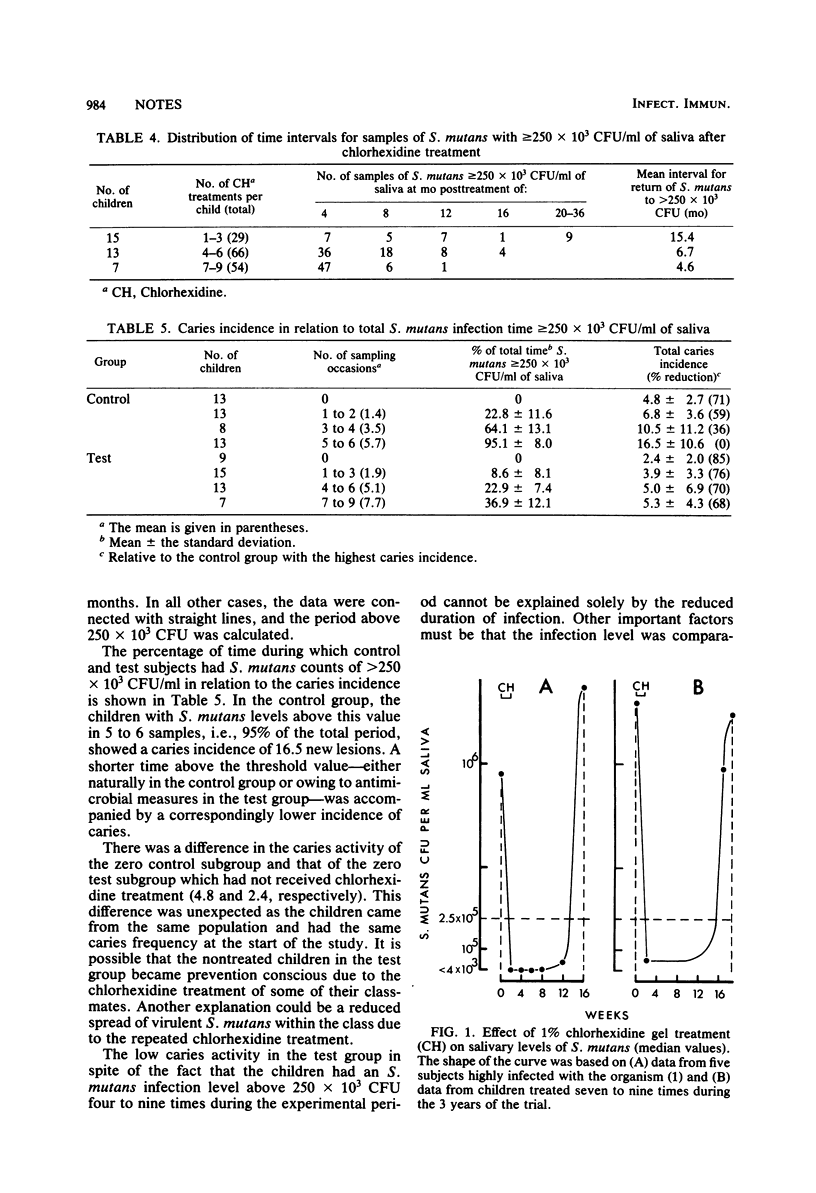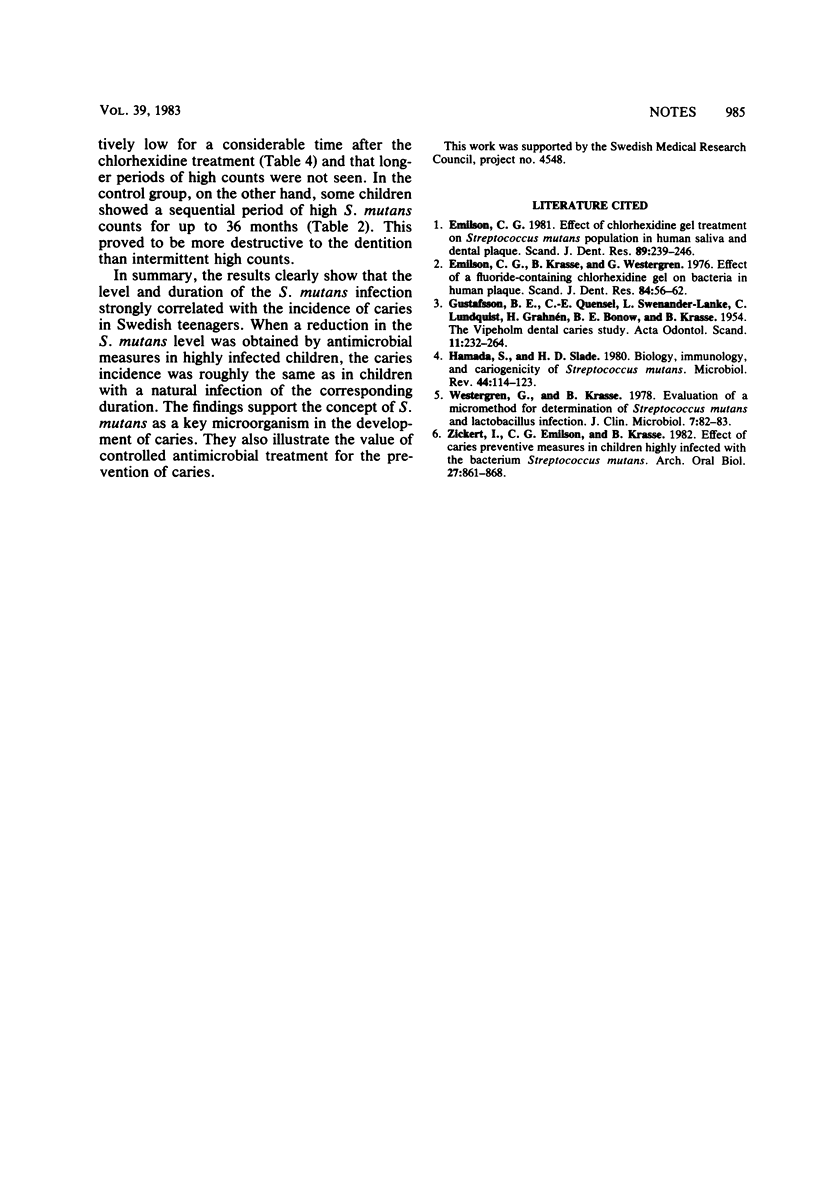Abstract
The caries incidence at various levels of Streptococcus mutans infection was analyzed in a control group and a test group. In the control group, the incidence of caries and the duration of S. mutans infection were significantly correlated. In the test group, the S. mutans infection was suppressed by antimicrobial measures when the number of S. mutans exceeded 250 X 10(3) CFU per ml of saliva. The results illustrate that the level and duration of the S. mutans infection are strongly correlated to the incidence of caries. The findings support the concept of S. mutans as a key cariogenic microorganism and illustrate the value of antimicrobial treatment in the prevention of caries.
Full text
PDF



Selected References
These references are in PubMed. This may not be the complete list of references from this article.
- Emilson C. G. Effect of chlorhexidine gel treatment on Streptococcus mutans population in human saliva and dental plaque. Scand J Dent Res. 1981 Jun;89(3):239–246. doi: 10.1111/j.1600-0722.1981.tb01677.x. [DOI] [PubMed] [Google Scholar]
- Emilson C. G., Krasse B., Westergren G. Effect of a fluoride-containing chlorhexidine gel on bacteria in human plaque. Scand J Dent Res. 1976 Mar;84(2):56–62. doi: 10.1111/j.1600-0722.1976.tb00462.x. [DOI] [PubMed] [Google Scholar]
- GUSTAFSSON B. E., QUENSEL C. E., LANKE L. S., LUNDQVIST C., GRAHNEN H., BONOW B. E., KRASSE B. The Vipeholm dental caries study; the effect of different levels of carbohydrate intake on caries activity in 436 individuals observed for five years. Acta Odontol Scand. 1954 Sep;11(3-4):232–264. doi: 10.3109/00016355308993925. [DOI] [PubMed] [Google Scholar]
- Westergren G., Krasse B. Evaluation of a micromethod for determination of Streptococcus mutans and Lactobacillus infection. J Clin Microbiol. 1978 Jan;7(1):82–83. doi: 10.1128/jcm.7.1.82-83.1978. [DOI] [PMC free article] [PubMed] [Google Scholar]
- Zickert I., Emilson C. G., Krasse B. Effect of caries preventive measures in children highly infected with the bacterium Streptococcus mutans. Arch Oral Biol. 1982;27(10):861–868. doi: 10.1016/0003-9969(82)90042-5. [DOI] [PubMed] [Google Scholar]


